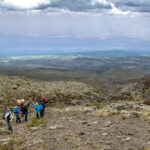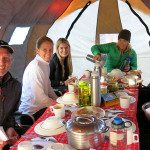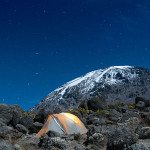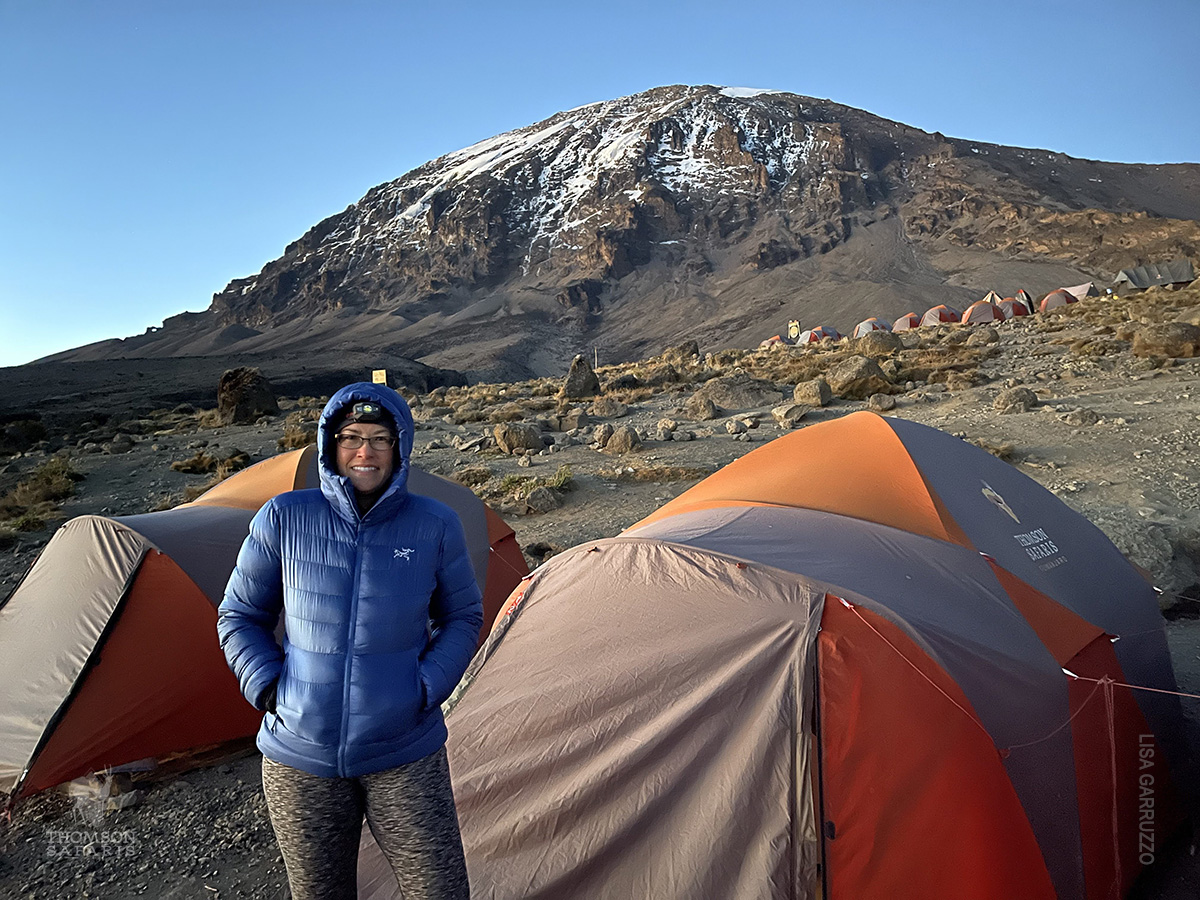
When you’re trail-weary after hours of trekking Mt. Kilimanjaro, there’s no better sight than the scattered orange tents of a Thomson camp in the distance.
Every day of hiking ends here, at your home away from home. Combining top-notch service with the highest standards of mountainside comfort, it’s your reward for a job well done: a chance to kick off your boots, rest your legs and recharge for the next segment of your journey to the Roof of Africa.
Camp life is critical to Thomson trekkers’ 98% summit success rate–and yet, it’s one of the most overlooked parts of the experience.
Let’s peel back the nylon flap and see what camp life is like on the mountain.
No Assembly Required
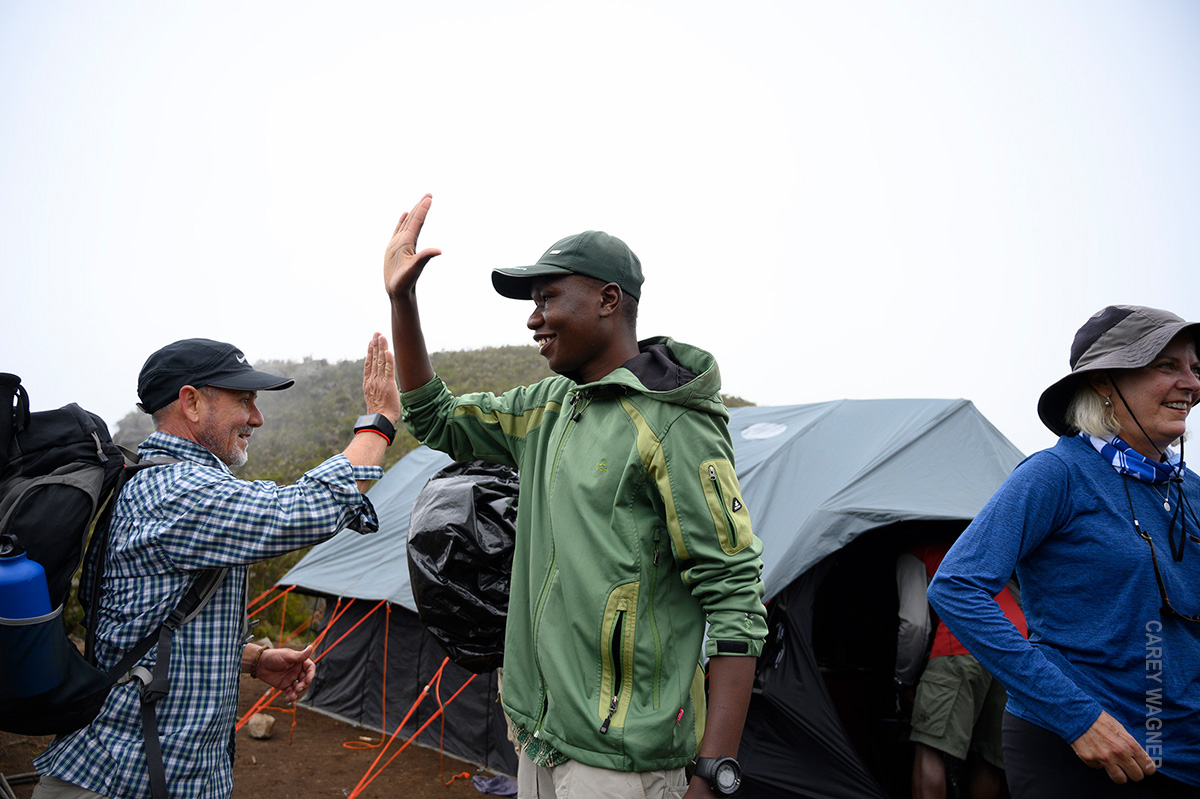
When you arrive at camp (usually in the late afternoons), Thomson’s cheery staffers will welcome you with a chorus of “Jambo!” (Hello in Swahili). They’ve been hard at work, building your mountainside oasis and prepping for your warm welcome.
Here, everything is taken care of: the staff has already set up your tent, unrolled your sleeping bag and stowed your duffel inside. They’ve purified your water and started cooking dinner. With no chores or demanding obligations, you’re free to rest however you see fit.
Social butterflies might flock to the dining tent, where they can swap stories of the day’s adventure over steaming tea and snacks, like fruits and energy bars. Others may prefer to bask in Kili’s epic scenery, chat with staffers or unwind in their tent.
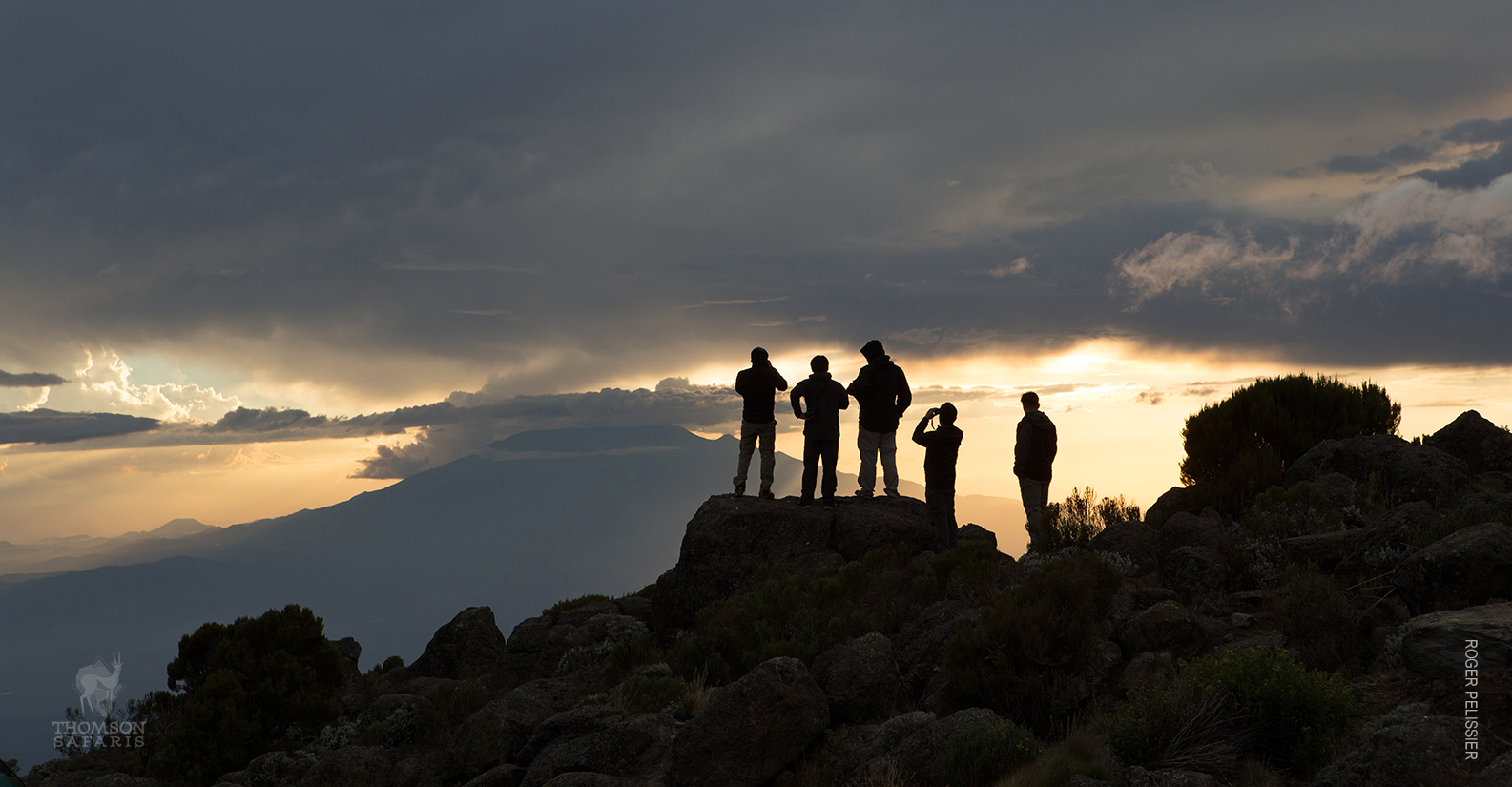
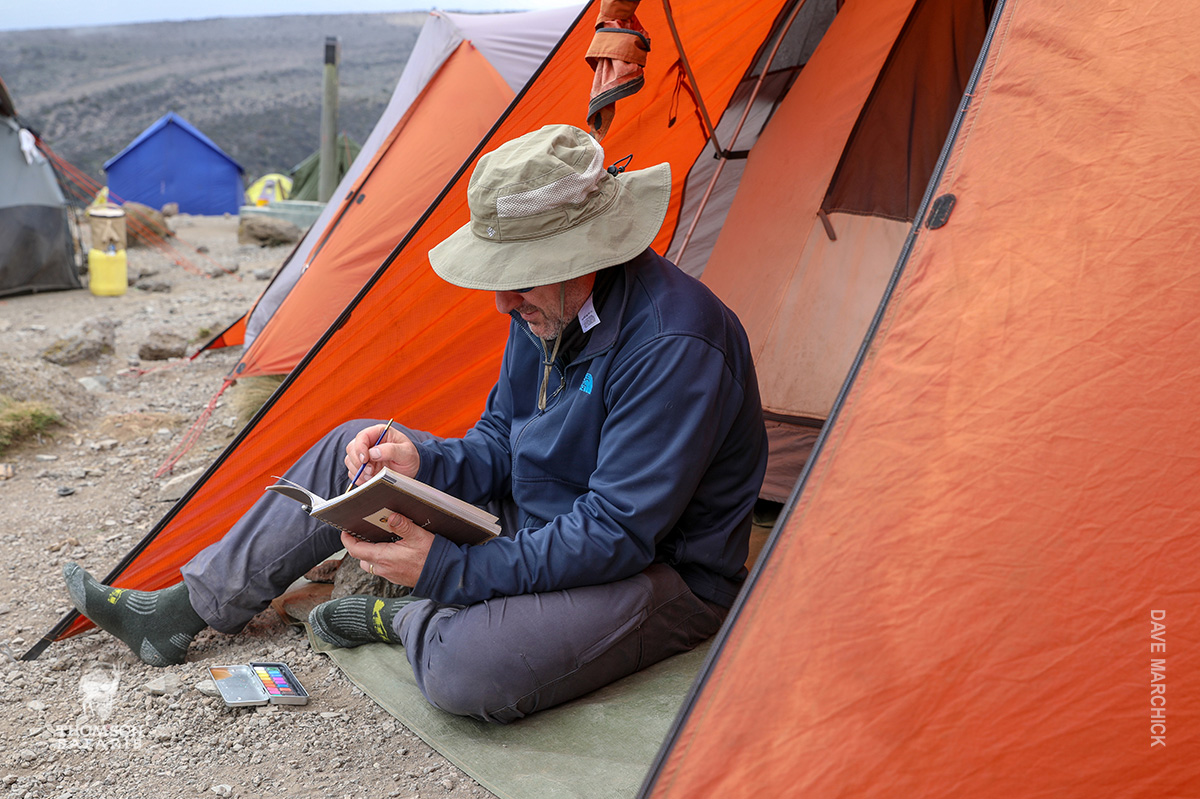
But first things first: you’ll want to peel off those dirt-crusted boots and gaiters (if you hired a personal porter, they’ll do this for you). It’s one of the best feelings on the mountain, to finally shed all that gear, coated in the trail’s hard-won sweat and dirt, before slipping into a cozy fleece and fresh socks.
Sit-Down Mountainside Dining
Let’s dispel a common myth: the food on Kili is amazing. With little more than a single propane burner, the Thomson crew regularly cooks mouth-watering plates of quiche, breaded chicken and lasagna with garlic bread.
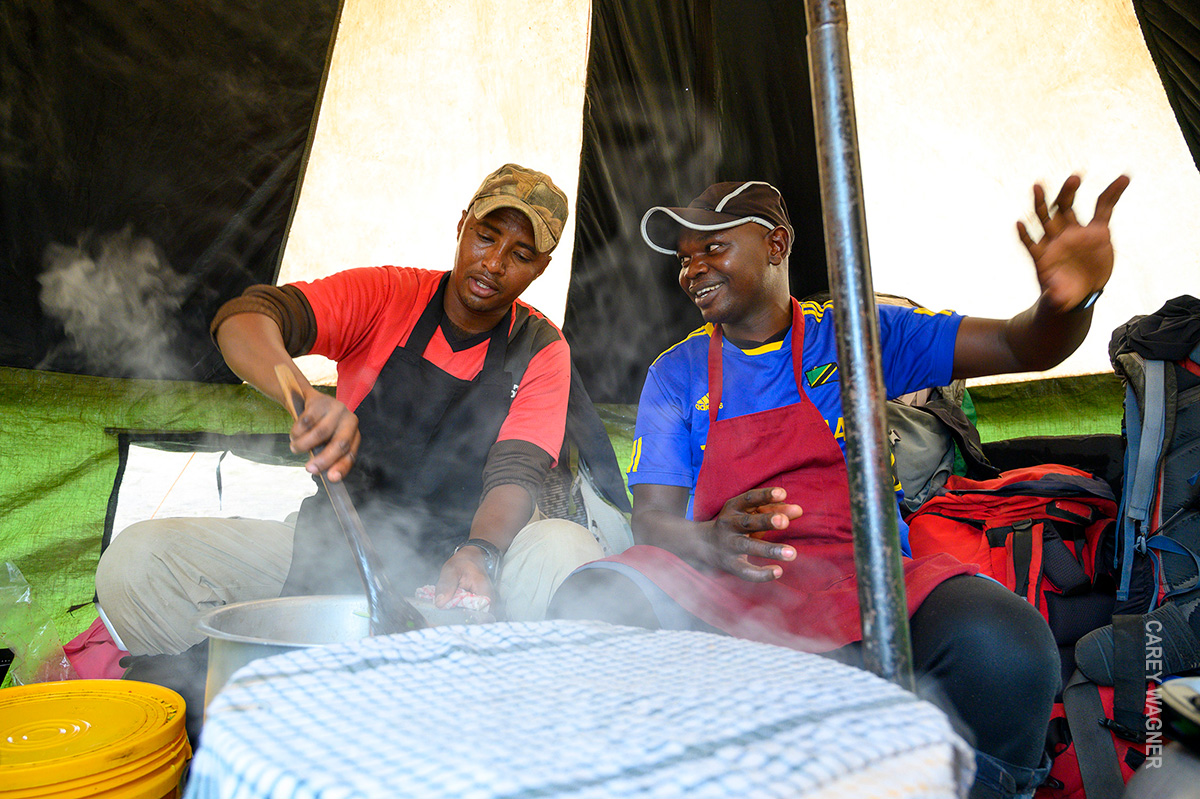
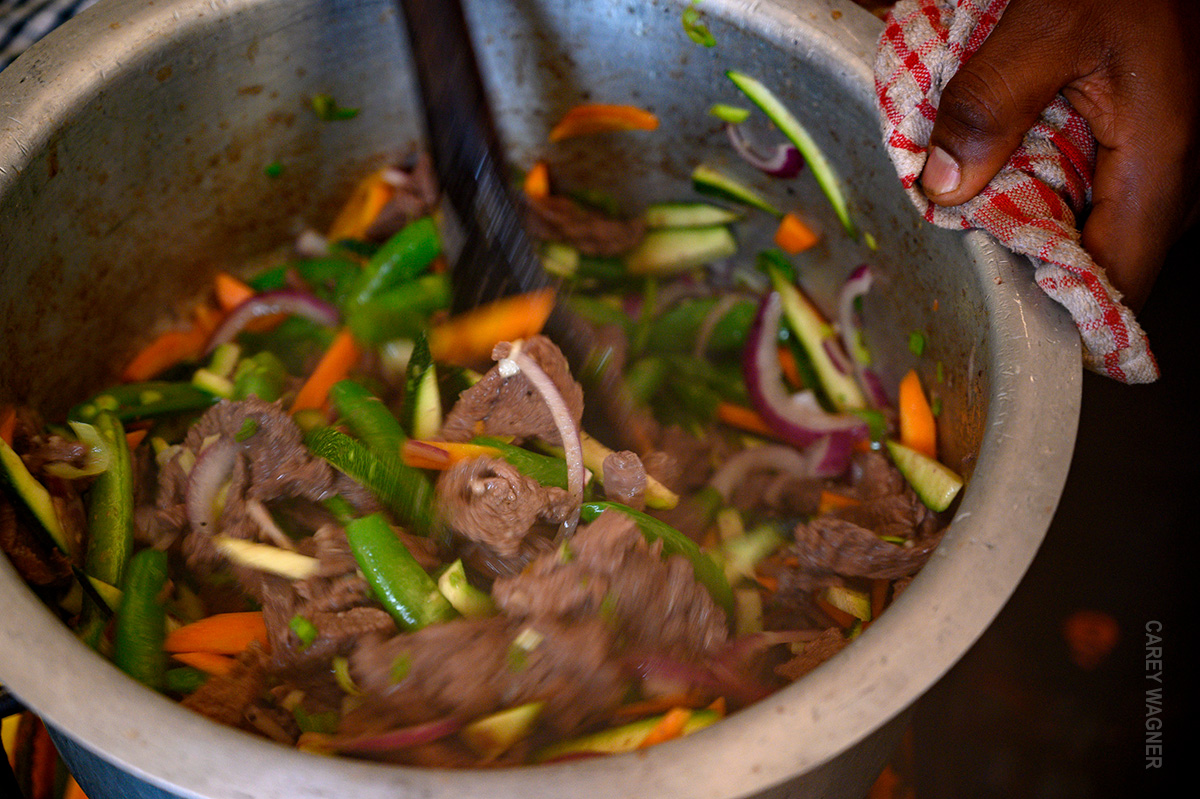
Don’t take our word for it; ask Thomson trekker and food critic Elda Martinez:
“I’m a lasagna snob, and the lasagna was really good,” Elda said in her review of Thomson camp food. “I would buy it in a restaurant.”
The trail is where bonds form; dinner is where bonds strengthen. You and your fellow trekkers can break bread as you share in each other’s challenges and triumphs of the day. It’s a time of joyous connection filled with laughter, stories and plates of nutritious food.
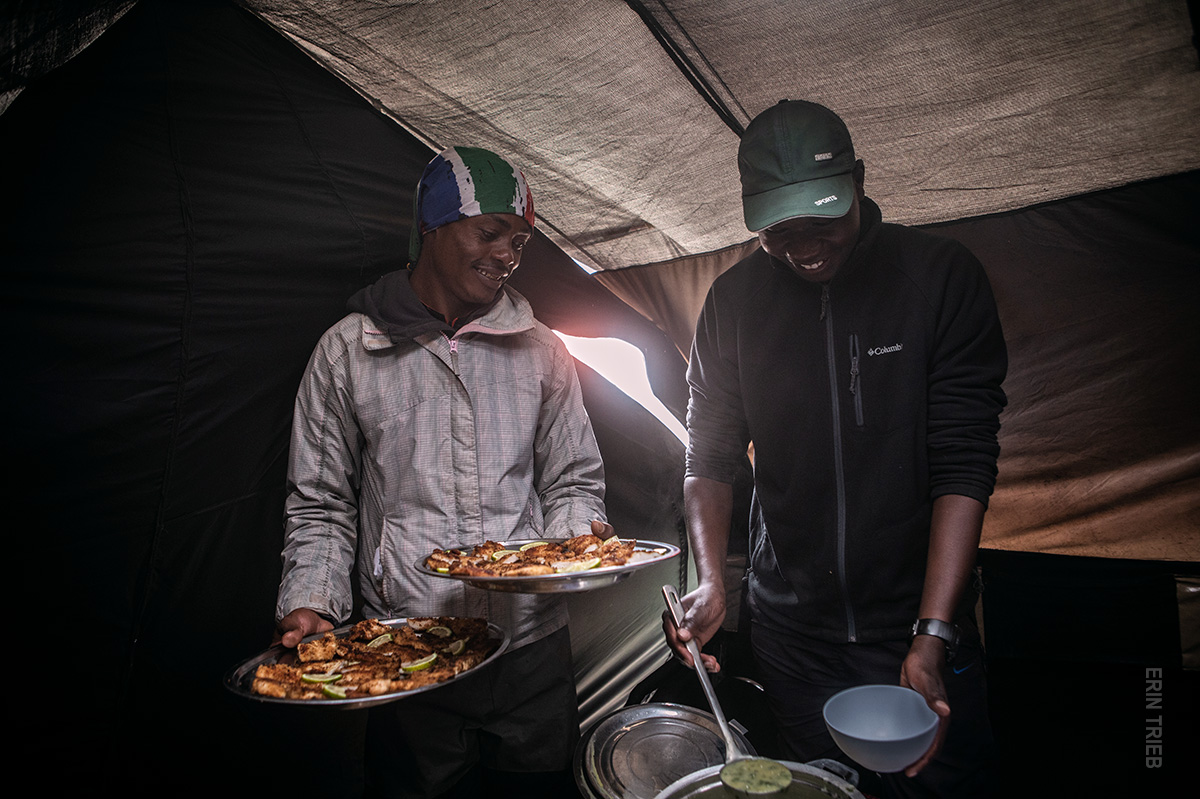
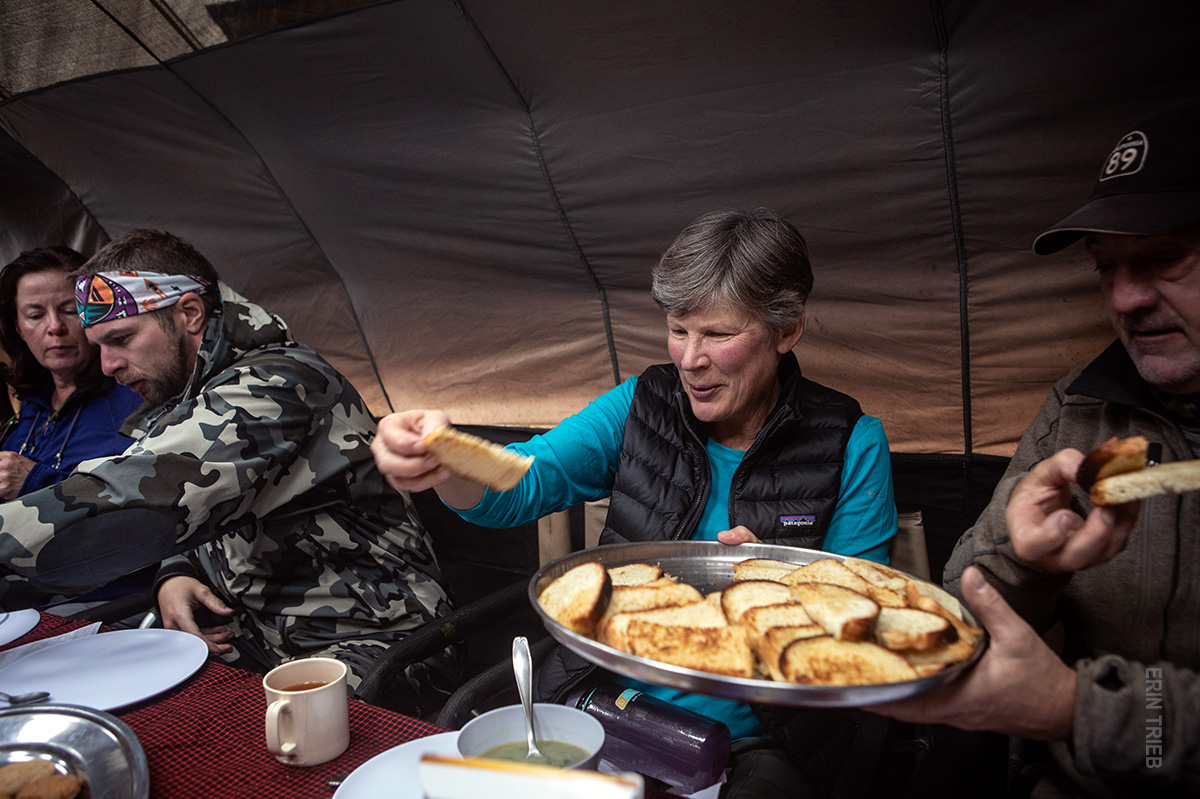
As mealtime wraps up, your guides will provide a briefing for the next day. They’ll also perform health checks, use a pulse oximeter to see how you’re acclimatizing and provide medical assistance if necessary.
Sleeping in Style
When dinner’s done, most guests prefer to return to their tents. But the pièce de résistance of the night arrives just as you’re about head back out into the cold. As you leave, a Thomson staffer will fill your Nalgene bottle with boiling water. Simply slip that bottle into your sleeping bag, and voila, you can look forward to a night of toasty sleep. It’s a little luxury that goes a long way on the chilly Kili slopes.
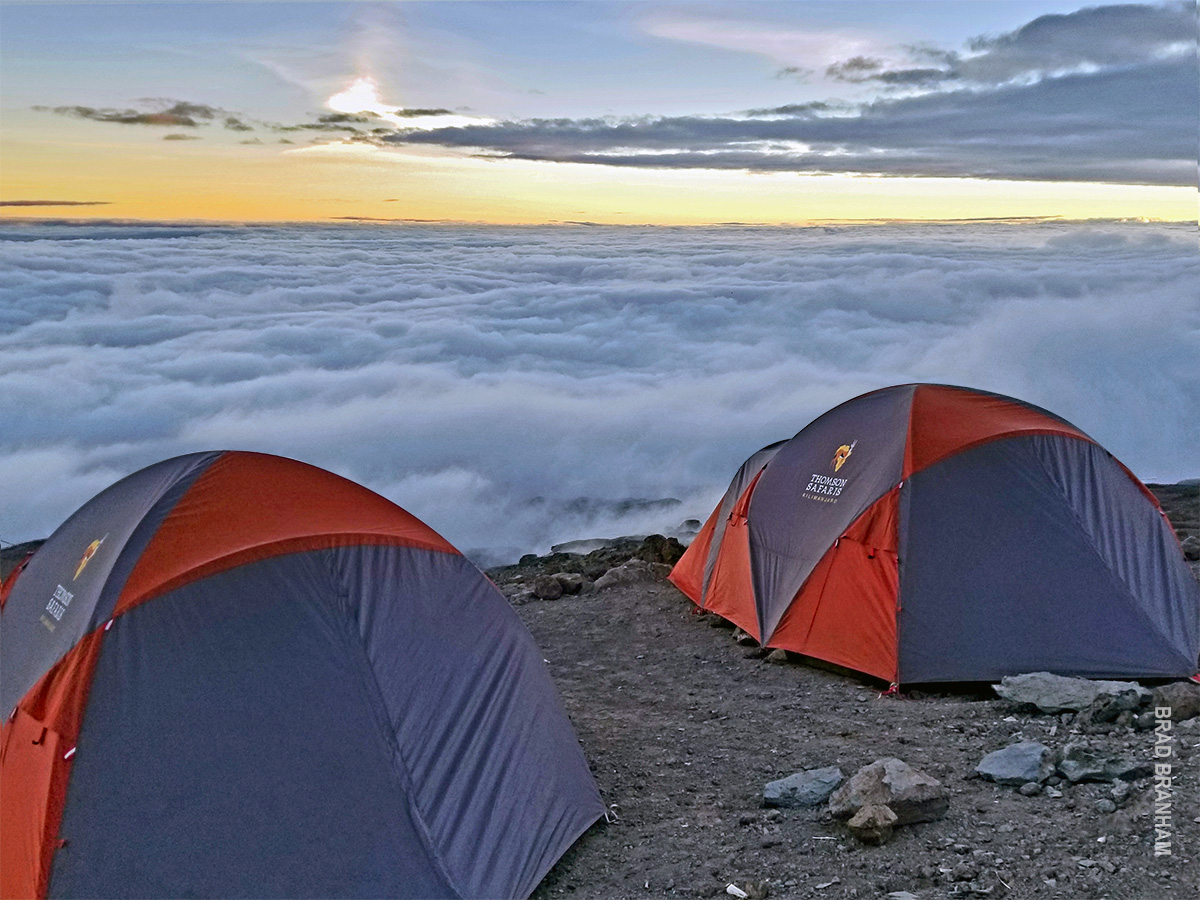
Thomson trekkers will bed down in Big Agnes tents that boast 61 square feet of space–more than enough for you and another trekker, if you’ve brought someone. The camp staff has already laid out your full-sized foam pad and sleeping bag to ensure you have a dry, comfortable night’s rest. Given the one-two punch of acclimatization and jet lag, this commitment to comfort matters—it’ll help you get to sleep faster, for longer stretches of time.
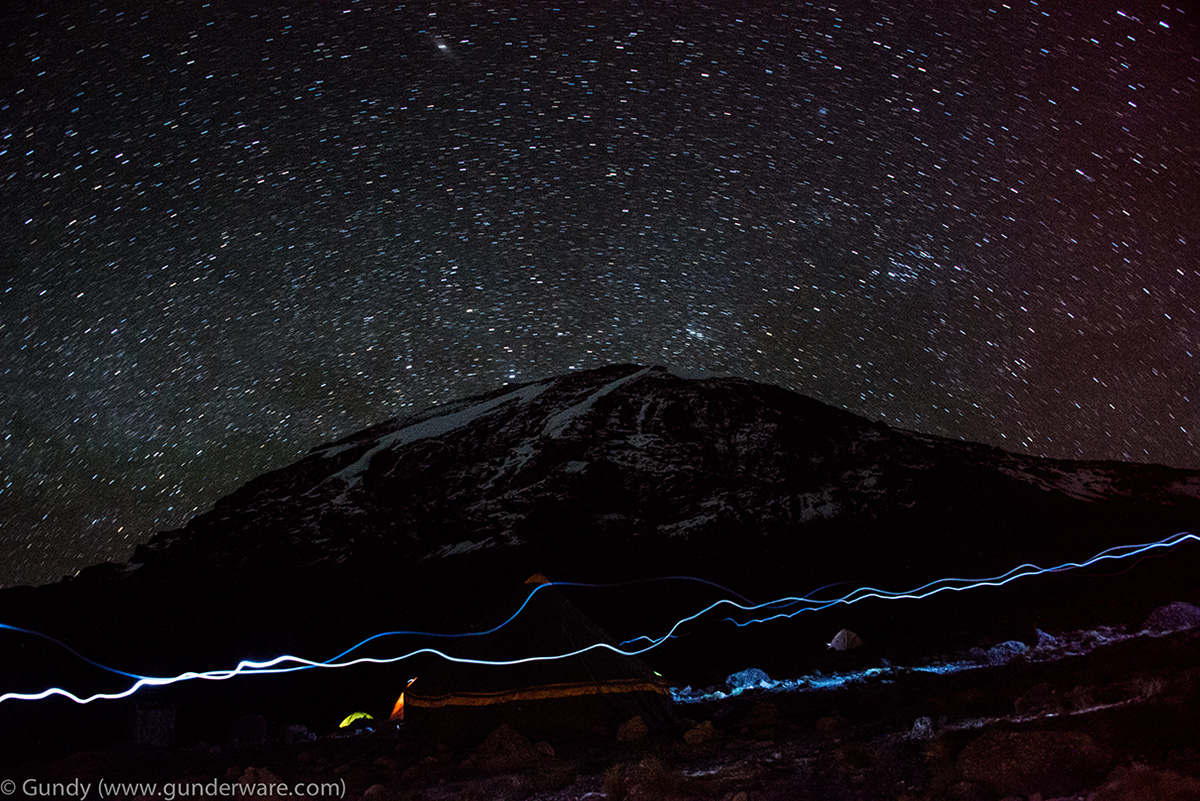
But if night comes and you’re not ready to sleep (or maybe you’re planning a midnight run to the toilet tent), we recommend taking a moment to look up at the night sky. Above you stretches a vast blanket of stars and the Milky Way’s hazy white ribbon of light. Guests often tell us that impromptu stargazing was a sleeper hit of their trek; the activity offers the kind of ethereal vista that quiets the mind.
Tips for Camp Life
- Camp is all about rest. Get comfy, stay hydrated and take a nap if you need it!
- Eat as much as you can! Snacks are provided during your time at camp, and you’ll have plenty of food at dinnertime.
- Talk to the staff! They’re always happy to chat. Learn Swahili with them, make friends and build relationships. You’re probably not going to have this opportunity again in your life, and the trek is an awesome time to form forever bonds.
- Enjoy the view! Many Kili camps are scenic in different ways. Barranco camp sits in a valley of alien-looking giant groundsels with the imposing Barranco Wall looming above. Karanga Camp puts you above the clouds, and on a clear night you can see the lights of the city of Moshi twenty miles away.
- If the call of nature, well, calls in the middle of the night, it’s important not to hold it in. You’ll expend vital energy and warmth doing so. We recommend going to your private toilet tent immediately–and stargazing on the way back!

